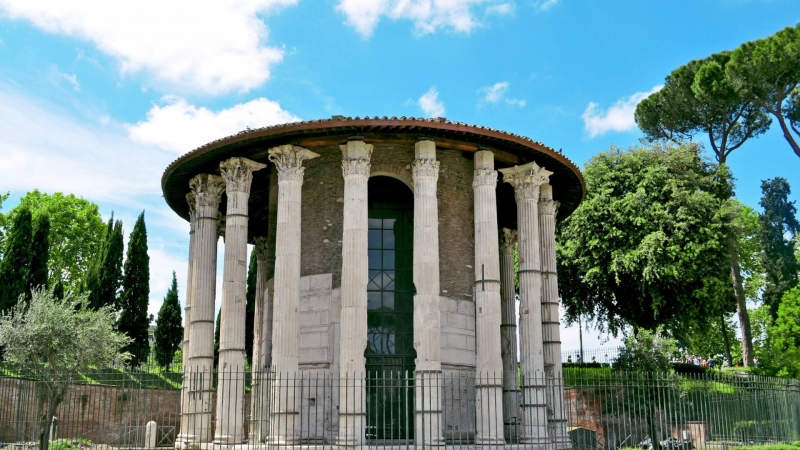Temple of Hercules Victor

The Temple of Hercules Victor is a Roman temple in Rome's Piazza Bocca Della Verita, next to the Tiber and the Forum Boarium. It is a tholos, a circular temple with a colonnaded exterior that is of Greek peristyle. The Temple of Hercules is the focus of a folktale that claims no flies nor dogs will enter the holy location, despite the Forum Boarium's function as the cattle market for ancient Rome. Who this temple was built in honor of and for what reason are still mysteries to this day.
The Temple of Hercules is the only remaining sacred building composed of Greek marble in ancient Rome. One of the city's oldest standing structures, the Forum Boarium on the eastern bank of the Tiber, is supposed to be the work of Greek architect Hermodoros of Salamina. Giovanni Battista Piranesi immortalized this emblem of the Roman urban scene in his renowned gigantic etchings in the seventeenth century.
The circular structure of the temple features 20 Corinthian columns that revolve around a central cylindrical rock, which is thought to be the location where Hercules rested following his tenth labor. After being transformed into a church honoring San Stefano by Innocent III in 1140, the structure came to be associated with Christianity.
Over the course of two millennia, the temple's marble components have undergone significant deterioration. The building's columns were severely crooked when it was put on the 1996 World Monuments Watch list. Each column is made up of blocks, and there was significant material loss around the joints, particularly along the marble's inherent veins, which considerably raised the risk of movement or collapse.
Support from American Express allowed for the implementation and completion of a thorough conservation program at the site between 1996 and 1998. The conservators concentrated on preserving the structure's rare Christian paintings and fading marble surfaces while ensuring its stability and preventing geological hazards to the site. Without jeopardizing the historic architecture, stainless steel and titanium pieces were used to secure the new roof to the column capitals. With fresh stonework, the tuff podium and pavement were raised to their original heights, and then, to ensure their stability, they were partially reburied. The fifteenth-century fresco above the altar as well as the marble and plaster portions of the interior walls have been cleaned, consolidated, repaired, and treated.










